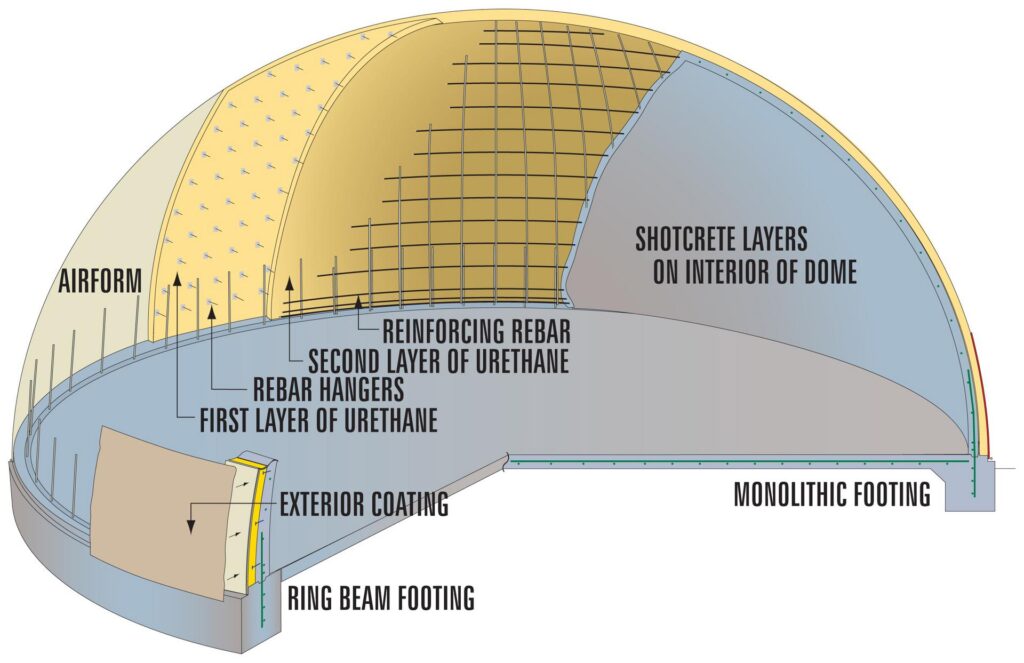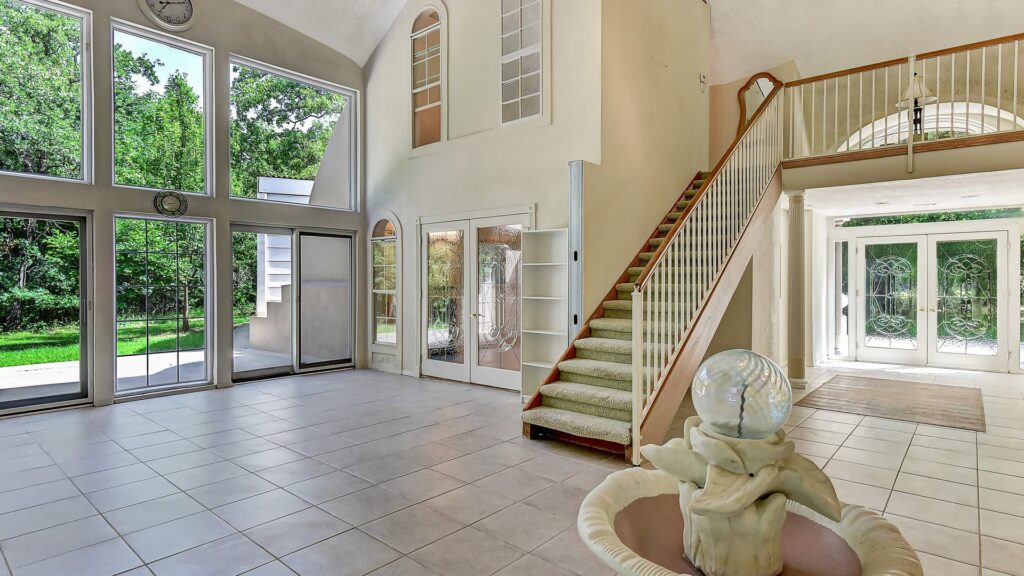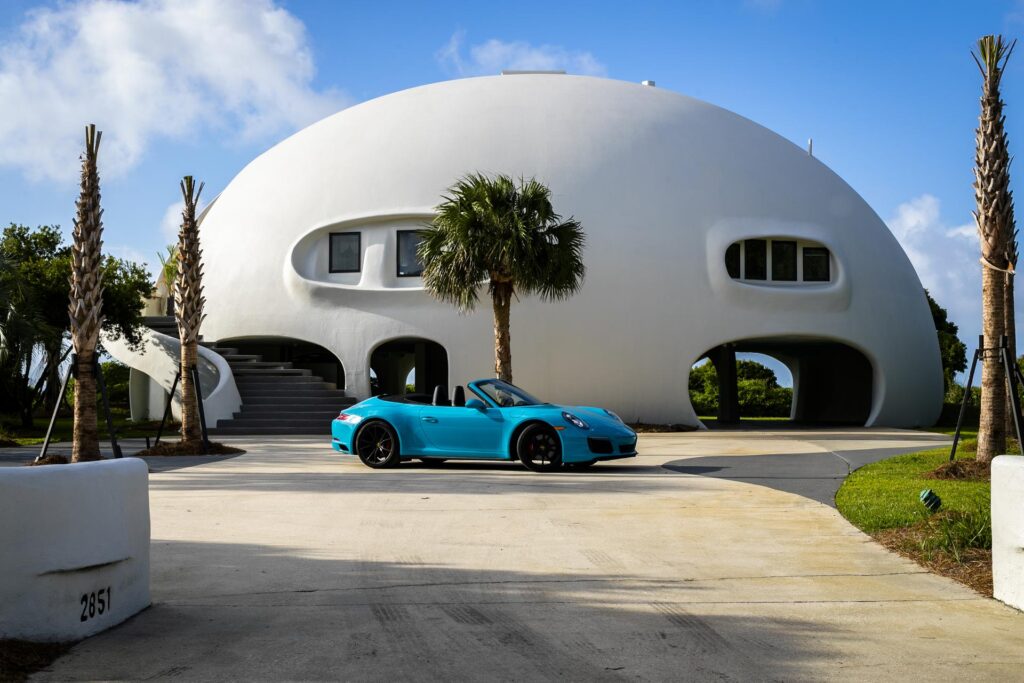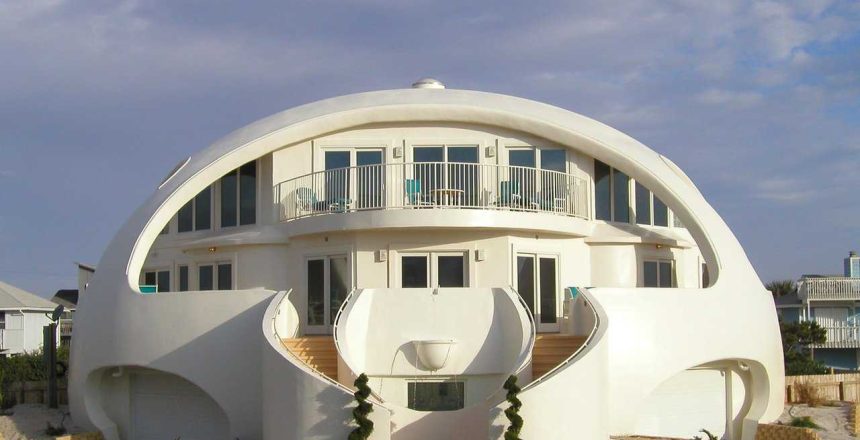Have you heard that you shouldn’t build a dome home? Yeah, so have we. There are some rumors hanging out online that make it sound like it would be a bad decision. But we’ve looked through everything people had to say about not building a dome for your dream home, and we’re here to give you the real scoop.
Why You Shouldn’t Build a Dome Home: The Top Fears
Articles that list reasons not to build a dome home tend to fall into one of two categories: people who don’t know the truth about all the benefits of dome homes, and people who want to build you something else. These half-truths might make you hesitate, but we’re going to dig a bit deeper and give you the whole truth about these unique buildings and all they have to offer.
But first, let’s look at what the rumors say about concrete dome homes.
Are Dome Homes Unsustainable?
While the main materials for concrete domes are not completely sustainable, the idea that dome homes are bad for the environment is misguided at best.
Vinyl and polyurethane are both petroleum-based products, so it’s easy to think that these domes aren’t environmentally friendly. Likewise, concrete is considered a high carbon footprint product to mix, but it is one of the most durable materials you can choose for a building.
And when combined, these three central components are nearly indestructible.

Why does this matter? Because their carbon footprints are stretched out over decades upon decades, possibly more than 100 years, without the need to replace the materials.
And with around only 25 percent of the materials needed for construction, dome homes reduce the demand for lumber, fiberglass, and many other materials used in conventional construction.
Do the Airforms Fall Apart?
Airforms provide the initial frame for the concrete dome home, but they also act as a protective outer shell after the concrete and spray foam insulation are completed. But can it withstand normal wear and tear?
Actually, yes: they can. It’s true that airforms may need some maintenance, including annual cleaning. But the treated vinyl can handle heat, cold, and solar exposure without worrying about the material deteriorating.
And in extreme conditions, the airform still maintains its integrity. During severe storms, the airform may suffer damage. However, the repair is as simple as heat welding a vinyl patch over the tear.
The only time airforms may be weak is when you build a dome home, while it’s being inflated and before the foam and concrete are applied. High winds or careless installation can cause issues. But once it is integrated as part of the final structure, your airform is incredibly resilient.
Is Ventilation a Problem in Dome Homes?
Concrete domes are airtight and watertight, making them perfect for storage facilities. In fact, they’re one of the best options for dry concrete mix storage because there is no threat of moisture infiltration.
Of course, the concern is that this same benefit can become a detriment when you build a dome home instead of a storage structure. Since the building envelope is so tight, some people are concerned that domes can become stuffy, moldy, or dangerous to live in.
But this is nothing but a myth.
Yes, concrete domes can be made with no ventilation, but when you build a dome home, your HVAC system is incorporated into the structure to ensure the best airflow and quality possible. Conventional construction methods make it possible to rely on the home’s inherently leaky envelope for much of the ventilation. And while modern methods have improved upon this, requiring more sophisticated systems to regulate both intake and exhaust ventilation, conventional homes still don’t compete with the air control of dome homes.
In fact, dome homes can be designed for whole-house air filtration and purification, hypoallergenic systems, and much more efficient HVAC mechanical designs. When you build a dome home, you’re building a cleaner, safer home than any conventional build today.
Are Dome Homes Hard to Finance and Do They Lose Property Value?
A dome home’s unique style and look definitely takes a unique buyer. And that’s why it’s common to hear that concrete dome homes can decrease property value or make a sale more difficult. Likewise, some say that financing a dome home is more difficult than conventional construction. With its unusual structure and construction requirements, some financing sources are reluctant to put money behind it.
But with the proper support, financing concerns can be overcome. Having an experienced dome builder on your team means having someone who’s gone through the process before. They know the requirements for permitting and zoning, as well as which lenders are friendly to dome home designs and builds. An experienced builder can also guide you through the process of completing the different reports and studies necessary to start construction without hiccups.
While putting your dome home on the market might be a struggle, your smaller buyer pool is far more passionate about dome homes than most people are about conventional homes. Those looking for a dome, or considering one for the first time, will know all the benefits that come with these unique homes. And those benefits allow you to see a strong return on your investment. After all, safety, security, and low-maintenance living are always in demand.
How Can You Fit Doors and Windows in Domes?
It’s true: fitting square pegs into round holes is not a wise pursuit. And with the convex shape of a dome to work with, it’s easy to think that you can’t build a dome home with conventional windows and doors. How could a flat rectangle fit a curved roofline?
If you know how concrete dome homes are actually built, though, this isn’t even close to a real concern.

Each airform is custom designed to include any feature you want, even flat windows and doors. All that’s required is a planned frame for those locations. And yes, this is absolutely possible, no matter what you dream up. Most dome homes feature conventional doors and windows. The doors and windows are framed out with the airform and wooden framing prior to spraying insulation or concrete. When the structure is solid, those frames are opened up so that the doors and windows can be installed.
But if you’re up for the adventure, you certainly don’t have to choose conventional doors and windows. Curved, convex, round, and cathedral shapes are all possibilities with the right custom fabricators and craftspeople. Concrete domes can take on the whimsy of a hobbit house or the artistry of a Frank Lloyd Wright style. It’s up to you!
Why Build a Dome Home?
Now that we’re clear on the myths people believe about why you shouldn’t build a dome home, let’s talk about why you should. Obviously, the objections can be overcome. But why start this process in the first place? Wouldn’t it be simpler to just build what everyone else is building?
It might be, but you’d miss out on some key benefits that you’ll never get from conventional homes—at least not without an excruciatingly high budget. Here are our top six reasons why you should build a dome home instead of a conventional home.
Incredible Energy Efficiency
Concrete domes offer energy savings that completely blow conventional construction out of the water. Many dome homeowners have reported saving 50% or more on their energy costs over the course of a year. That’s because of the spray foam insulation and airtight seal that each dome provides. And because of this insulation, HVAC systems don’t have to be maxed out for peak temperatures to provide comfort year-round. These homes pay for themselves in savings over just a few years.
Safety and Security Against Any Disaster
With FEMA-approved near-absolute protection, you can be sure that you and your family will be safe in any situation, natural or otherwise. Hurricanes, tornadoes, earthquakes, and wildfires have little to no effect on these structures. And they’ve proven themselves against military-strength attacks as well, making them one of the safest structures on the planet.
Watertight and Airtight Construction
If you want to avoid mold, pollution, and uncomfortable temperature swings, build a dome home. Since water and air can’t infiltrate the dome without your express control, you can keep your home comfortable and healthy without the hassle of battling all the outside elements.
Eye-Catching Design
If you have a flare for the unique and intriguing, dome homes are perfect. They stand out against all the conventional rectangles in any neighborhood, and they can be customized to look opulent or earthy. The Eye of the Storm in South Carolina is a perfect example of the beauty these domes can offer to the casual passerby. You’ll never have to worry about fading into the background again!

Completely Custom Build
Custom homes get expensive quickly, and there are still many structural and engineering elements that can’t be changed for the sake of the building’s integrity. But when you build a dome home, it’s a blank canvas from wall to wall. The dome itself is structurally sound without any support beams of columns inside, so every single inch can be built to fit your needs and desires. No more load-bearing walls, and no more frustrating room shapes because engineers said they had to be that way to keep the house up.
Infinite Possibilities
Every dome home is completely unique from the inside out. Since airforms are one-time use, each one is custom designed and fabricated for your house alone. So when you start planning your dream home, you don’t have to settle for someone else’s design. You can combine multiple domes, make them big or small, and create hallways and passageways between different sections of your home as you please. There’s no wrong way to build a dome home.
How to Build a Dome Home With Us
Based in Sioux Falls, SD, KingDome Builders is your local expert in designing, building, and finishing dome homes. We’re a family-owned and operated company, and we build our dome homes as if we were going to live in them ourselves. That means high quality, attention to detail, and a whole lot of love in each one of our builds. Give us a call today to find out what your dream home could be!



